TCR suite
of computational tools
T-cells are essential to adaptive immunity, recognizing abnormal and foreign antigens via highly differentiated surface receptors, or TCRs.
Ardigen is working on the TCRopt module that maximizes the therapeutic potential of previously found hits while reducing the risk of off-target reactions.
From concept to TCR discovery
design → explore → select → optimize

From a highly diverse T-cell repertoire
to target-specific T-cell receptors (TCRs)
T-cells are an essential component of adaptive immunity that recognize aberrant and foreign antigens through highly differentiating surface receptors or TCRs. These receptors can bind some of the short peptides processed inside the host cell and displayed on its surface via HLA-I or HLA-II molecules¹. After recognizing peptides from the pHLA complex as abnormal, T-cells can trigger an immunological response that eliminates pathogens or leads to eradicating whole tumor cells. However, the targeted pHLA must have adequate binding strength and sufficient interaction duration for the T-cell activation to be successful.
To tackle the enormous variety of TCRs, Ardigen offers its expertise in experimental design and advanced bioinformatics analysis. Our interdisciplinary team of immunologists, bioinformaticians, and data scientists can create solutions tailored to your needs. We are now working on Ardigen's TCRopt module, an optimization module for TCRs, that maximizes the therapeutic potential of previously found hits.
By working with us, you can lower the risk of off-target toxicities while boosting the likelihood of a successful treatment outcome.
Design the best experimental
strategy to reach your goals
Reliable experiments start with optimal design. Use our expertise
and design your experimental strategy starting from scratch
and finishing with advanced bioinformatic analysis.
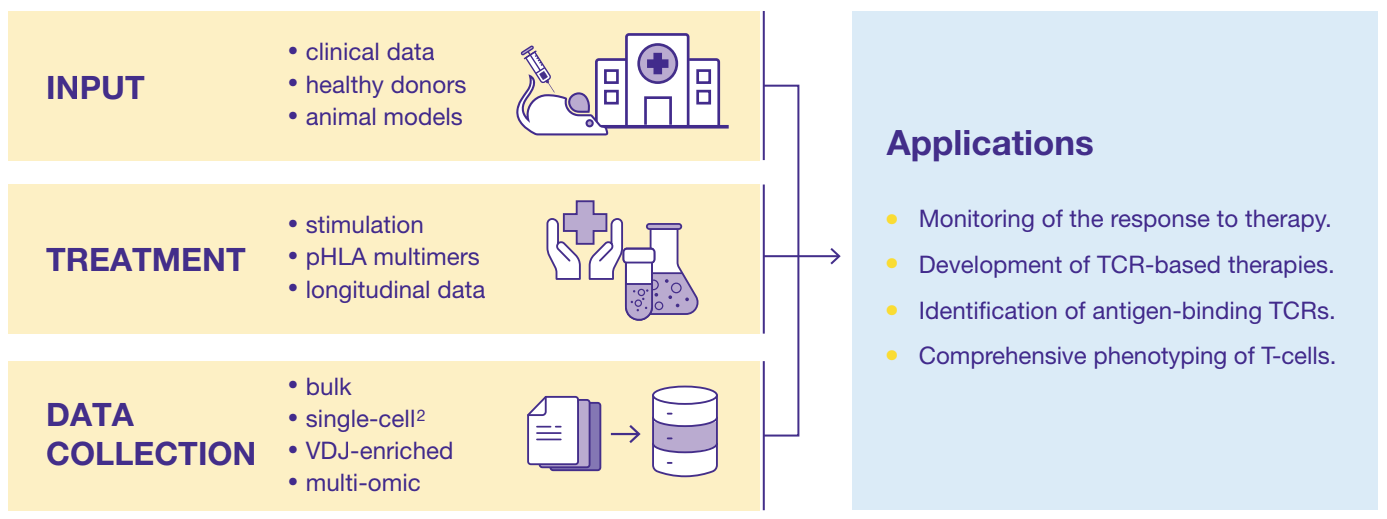
1 Learn more about Ardigen's ARDisplay models that outperform standard in silico approaches over twofold in Average Precision.
2 Different platforms e.g. 10x Genomics, BD Rhapsody, plate-based, split-pool barcoding, VASA-seq.
Explore TCR clonotypes and
get full insight into your data
At Ardigen, we aim to derive comprehensive insights from the data we obtain. Our team provides specialized TCR analysis for exploratory purposes, among others:
● Reconstruction of full-length TCRs.
● Identification of shared and expanded clonotypes.
● Monitoring clonotypes at different time points.
We utilize single-cell sequencing and multi-modal data to conduct integration studies that go beyond the TCR repertoire’s primary analysis.
● Assess the binding of your candidate targets.
● Using surface protein levels and transcriptomic profiles
to perform phenotyping.
● Confirm the condition of the cell (activation, exhaustion, etc.) using transcriptome and surface markers.
Multi-modal view at T-cells
at the single-cell level
.png)
The binding of the TCR cognate
antigen decreases with cell viability
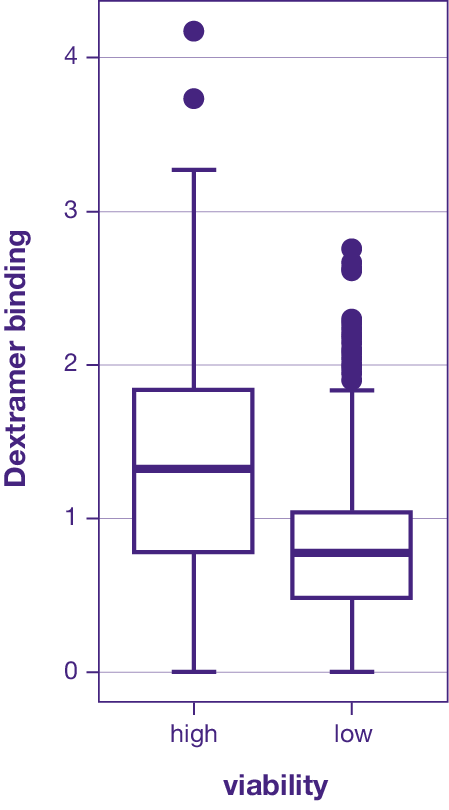
Lowering the binding capacity in dying cells might lead to false negative results.
Exclude poor-quality cells from your single-cell sequencing data using the gene expression module.
Cell viability is estimated based on
the fraction of mitochondrial genes
overexpressed in dying cells.
Target antigen origin
affects the TCR repertoire
TCRs demonstrated to bind a given cognate antigen, tend to group by the antigen origin. Explore the TCR repertoire diversity specifically for the given antigen and its origin.
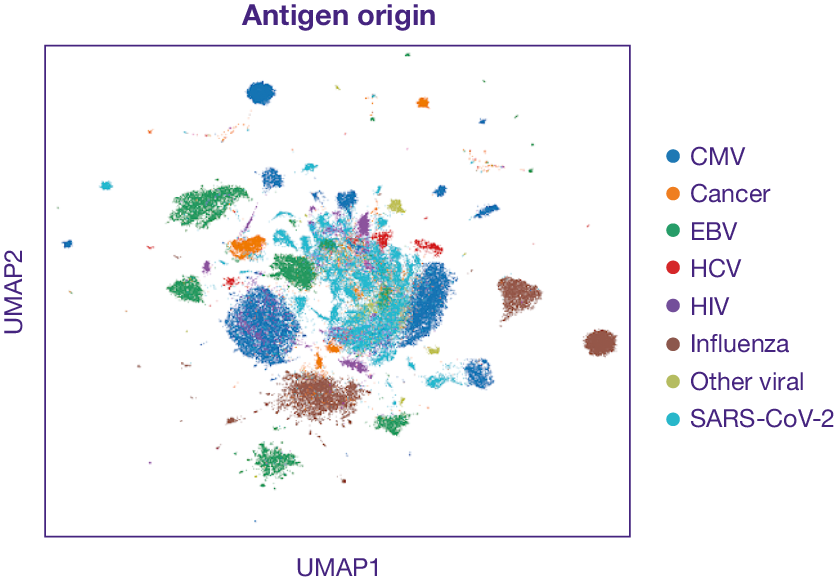
The UMAP embedding of TCR representations (~70k observations) was obtained from a deep-learning model. All TCRs are experimentally shown to bind specific antigens.
Different colors represent various origin groups.
Did you know…?
Activated T-cells show higher avidity due to the membrane reorganization of TCRs, whereas memory T-cells exhibit higher average affinity compared with naïve T-cells. Perform immuno-phenotyping with the surface protein module to delineate the cell type-specific effects.
Reveal complex multi-modal data
to select the best TCR candidate
Detect TCRs against novel tumor targets in naïve repertoires
The study included CD8+ T-cells derived from 13 healthy donors. Those T-cells were stained with 35 peptide:HLA (pHLA) complexes on a dextramer backbone. Peptides were derived from tumor-associated (TAAs) and tumor-specific antigens (TSAs) and tested in a complex with 4 different HLA alleles.

The binding affinity of a targeted pHLA dextramer in comparison to a background level is displayed in the plots above. Each dot represents a single cell. The highest number of dextramer molecules bound to any of the dextramers from the negative control is used to compute the background. The number of target-specific dextramers bound to the TCR must be five times higher than for the background ones.
High homology among rare clonotypes
of the antigen-binding TCRs
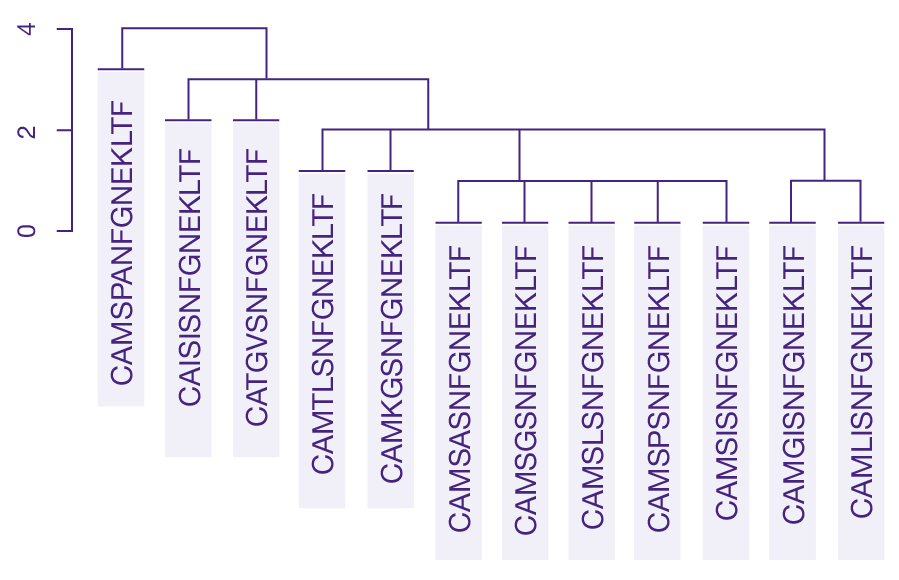
Naïve repertoires contain a large number of rare clonotypes that may show specificity toward a selected target. As a verification step of binding specificity, we determine high-homology TCR clusters (CDR3 regions identical in at least 80%). The plot above shows a representative cluster and Levenshtein distance between individual CDR3 sequences.
pHLA:TCR binding at the single-cell level
● pHLA:TCR pair identification success rate: 83%
● tens to hundreds of full-length TCR sequences per donor
● high sensitivity enabling identification of rare clonotypes
● identification of high-homology rare clonotypes
Choose targets with a low risk of side effects
pinpointed by Ardigen's ARDitox platform

Off-target toxicity
Identify potential off-target toxicities in cancer immunotherapies
with Artificial intelligence to improve safety, and speed up therapy development

Boost T-cell activity
maintaining low toxicity
Time is all you need, did you know...
● pHLA-specific TCRs are often inactive.
● Increased pHLA:TCR binding affinity often results in dangerous cross-reactivities.
● Interaction between pHLA & TCR sustained over time drives T-cell activation.
Catch bonds are non-covalent interactions whose lifetime increases with an external force applied to the whole pHLA:TCR complex. Typically, catch bonds do not change the binding affinity between TCR and its target and can lead to a higher level of T-cell activation by increased binding avidity.
How can you increase the interaction
time with Ardigen's TCRopt module?
● Predict an exact structure of pHLA:TCR complex to feature correct interactions between TCR and pHLA.
● Optimize T-cells activation by introducing modifications in TCR sequences that result in the presence of additional catch bonds.
● Analyze interactions between TCR and cognate pHLA complex at the atomic level for a rational design of mutations that induce the formation of new catch bonds.
With laboratory experiments and in silico simulations, verify the mutations proposed by Ardigen's TCRopt module.

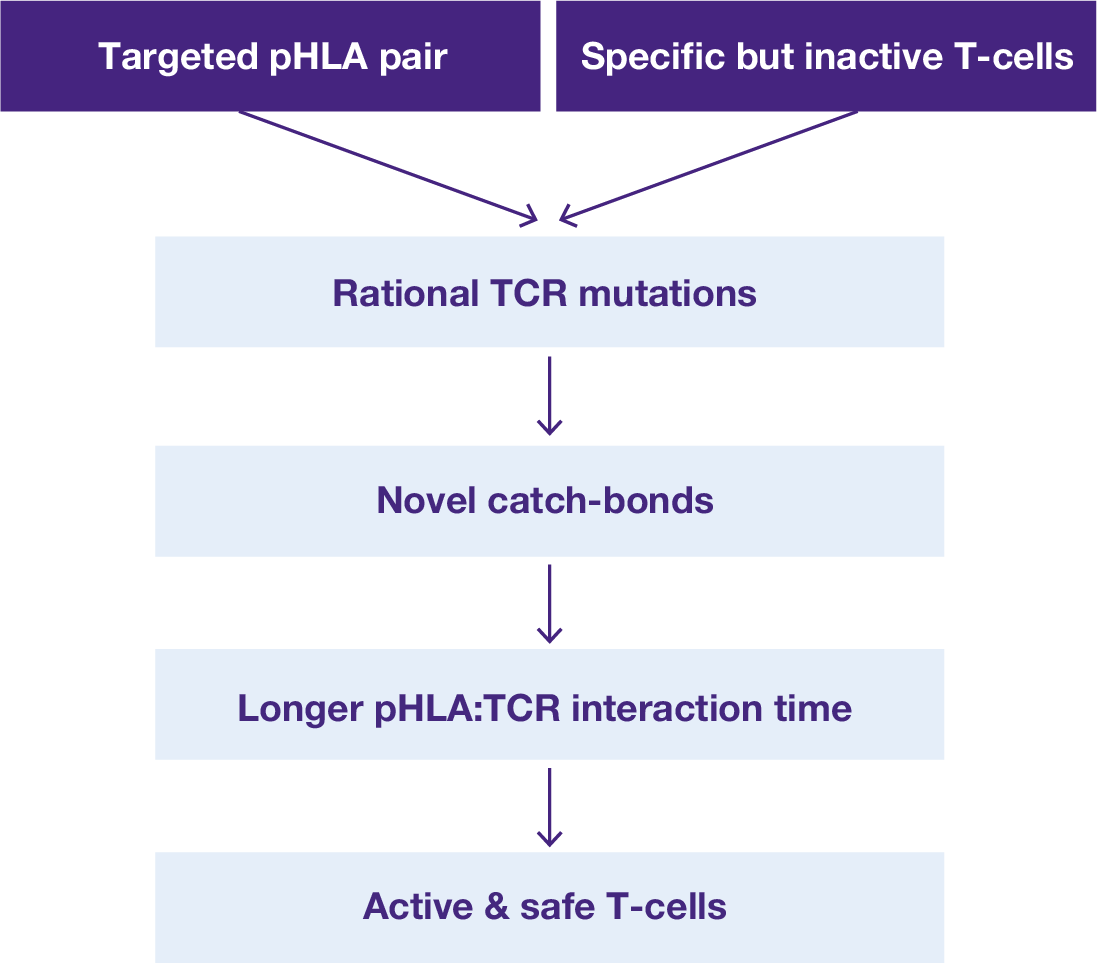
How can we help?
● We provide solutions for the prediction of pHLA:TCR structures at experimental accuracy, based solely on the amino-acid sequences.
● We propose initial mutations to introduce novel catch bonds to your pHLA:TCR and potentially lead to a higher T-cells activity.
● We specify, rank, and confirm which of the mutations are most promising with our in-house optimized in silico simulations.
● We prepare a detailed plan of AI-lab loop experiments that further determine the best mutations.
Are you interested in Ardigen's Immunology solutions?

Immunity by design
Whether you are working on TCR-Ts, TCRm-Abs, peptide-based vaccines, or other immunotherapy approaches, we would be excited to learn more about your projects and explore how we can support you.